Audi has the R8, Mercedes the SLS, and BMW – nothing. The i8 will finally fill the gap, although rather than the traditional combustion engines of its Audi and Mercedes rivals, the i8 uses a sophisticated hybrid drive.
“The i8 shows how we envision the future of the premium segment,” says BMW's chief designer Benoit Jacob. Design-wise, the car is very ‘clean’, while the interior sports a lot of visible carbon, as though the car is carrying its internal organs on the outside.

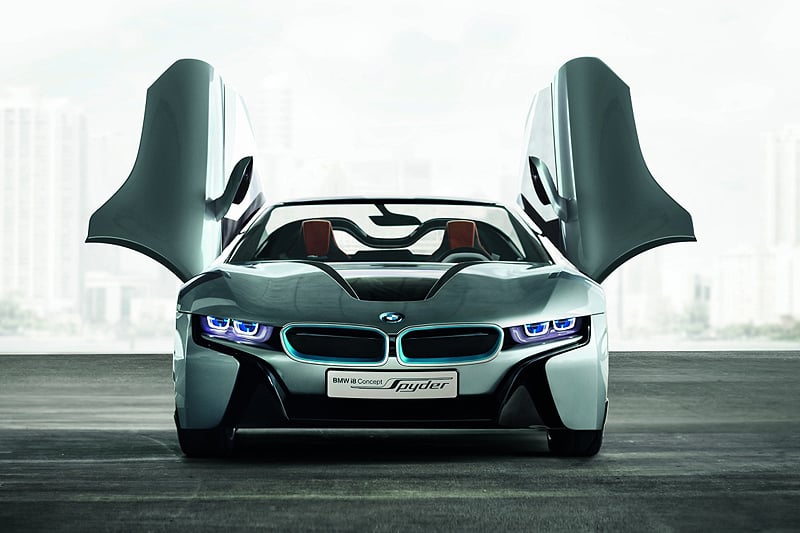
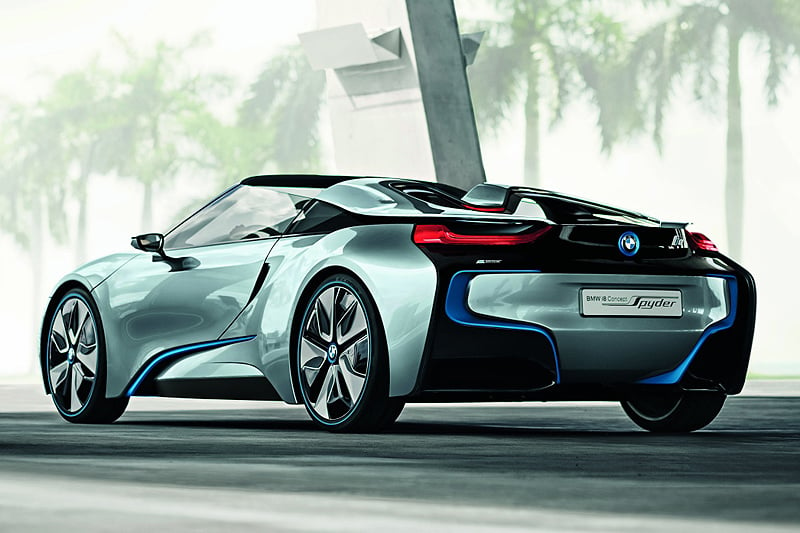
The 4.4m-long and 1.9m-wide i8 Spyder stands just 1.2m high, making it as low as a Ferrari 458 Italia. Despite the lightweight concept with extensive use of CFRP (carbonfibre reinforced plastic), the BMW comes in at a hefty 1.63 tonnes. Adding to the weight is the high-capacity battery, fitted low to keep the centre of gravity as close to the ground as possible.
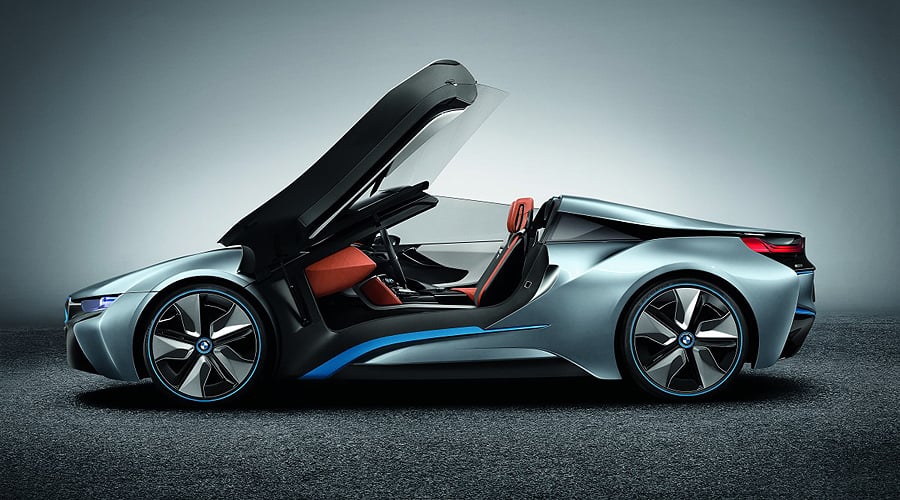
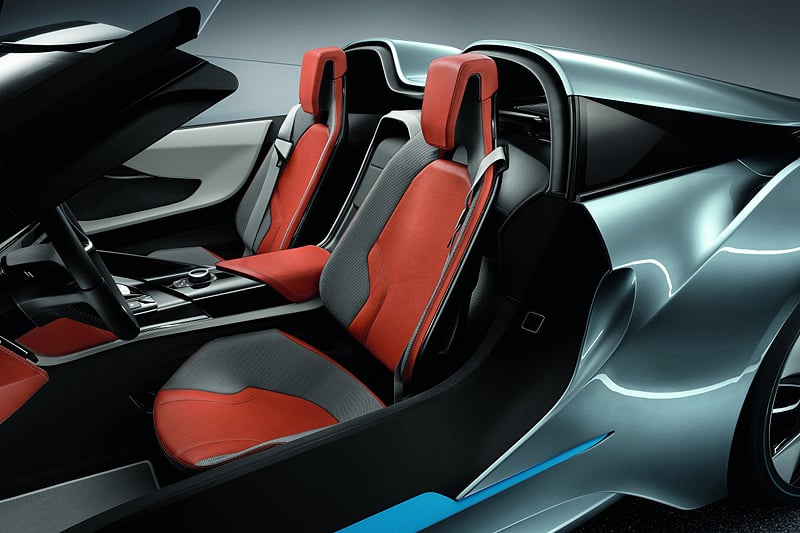
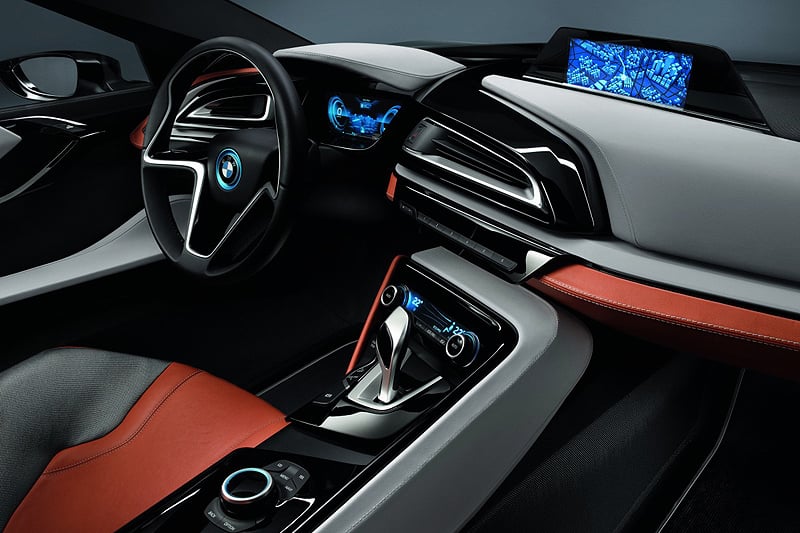
The hybrid drive consists of a 131HP electric motor on the front axle and a 223HP three-cylinder petrol engine at the rear axle, with a total maximum torque of 550Nm. The 0-62mph sprint should be possible in five seconds, with the drive automatically directed to the front and/or rear wheels, as required.
The battery, which is charged by regenerative braking while driving, should be capable of allowing around 18 miles of pure electric driving. BMW gives a charging time of one hour and 45 minutes.
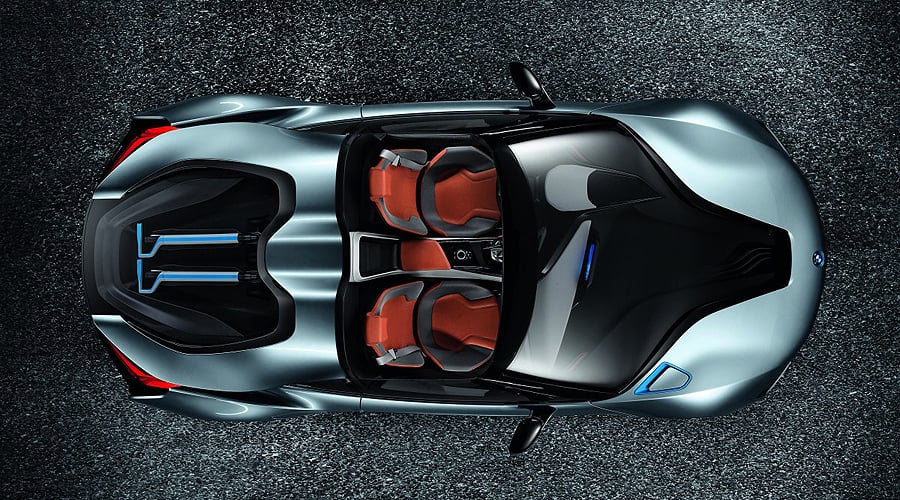
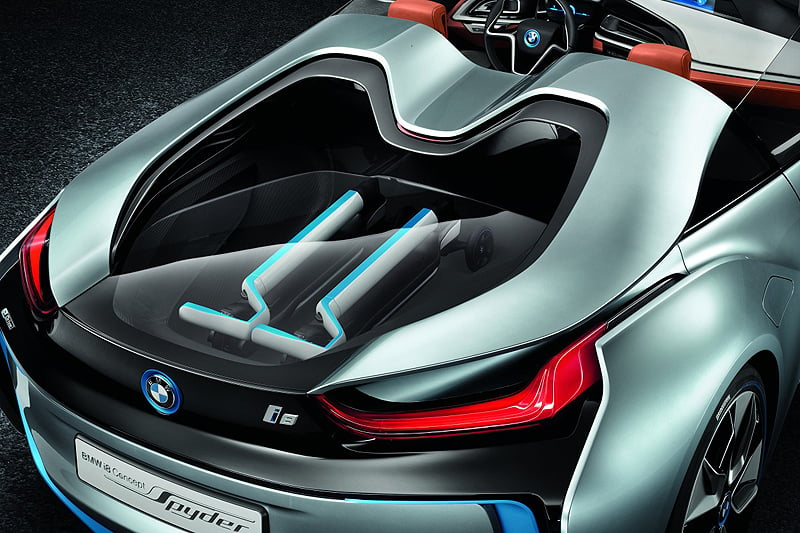
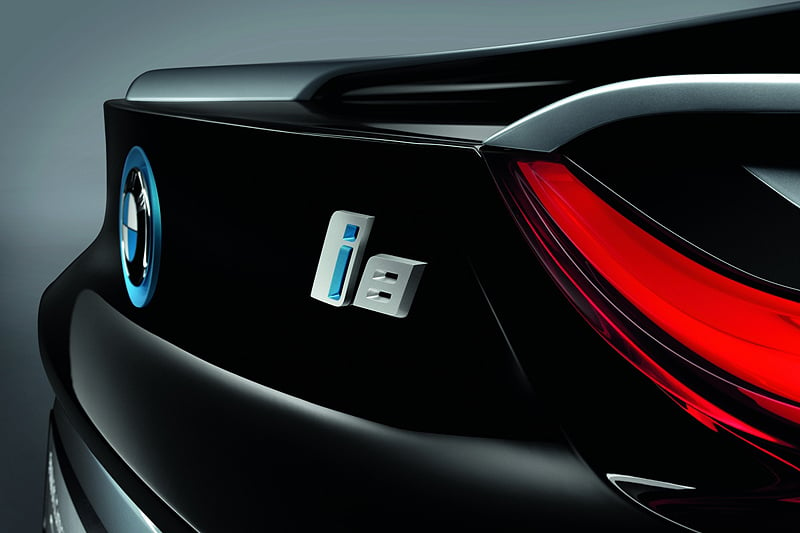
If the i8 Spyder makes it to production, it’s likely to lose the huge windshield that runs almost in a V shape to the BMW logo on the bonnet. “That’s because of the windscreen wiper, which would be difficult to implement in a production car,” says Benoit Jacob.
As per current BMW models, the i8 Spyder would also offer different driving modes, such as Eco Pro, in which all the car’s systems are geared to maximum efficiency. At such times, the instruments are lit by a soothing blue glow. If they appear orange, however, you know you are in full-blooded Sport mode.
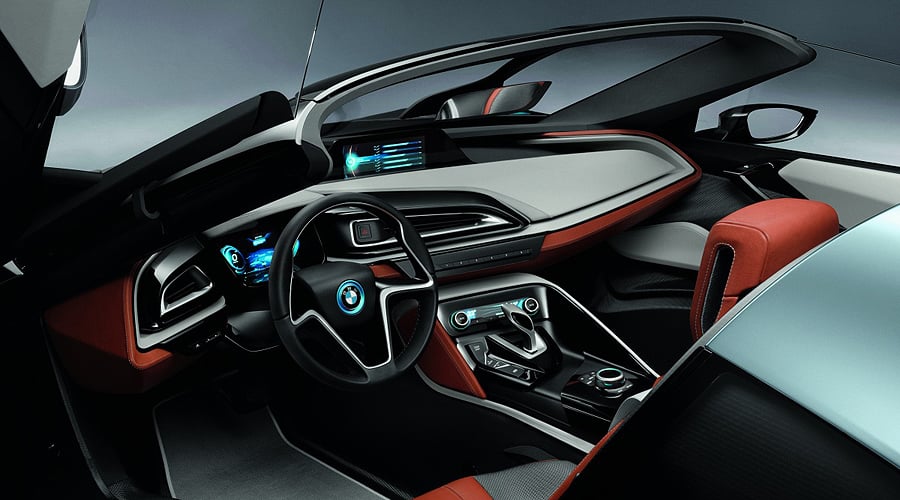
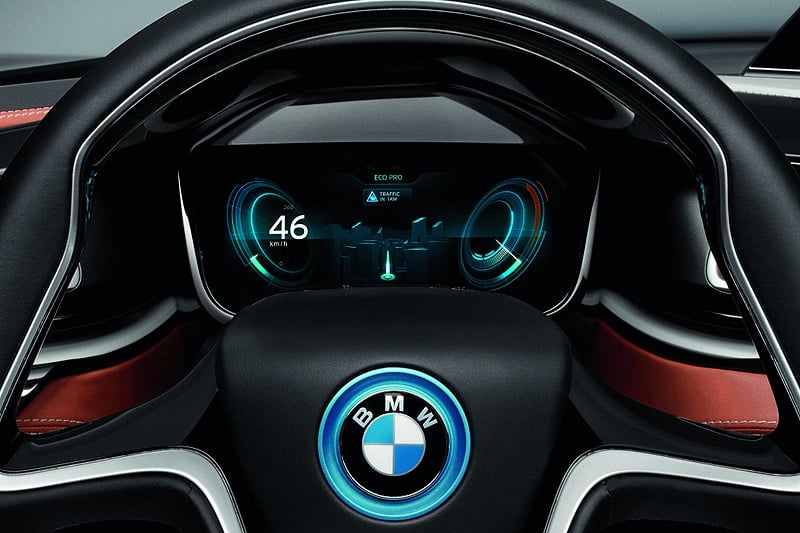
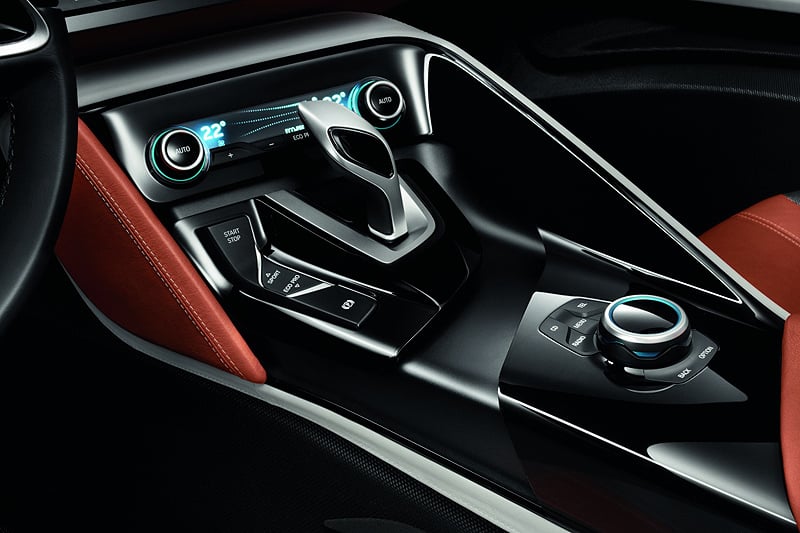
Photos: BMW














